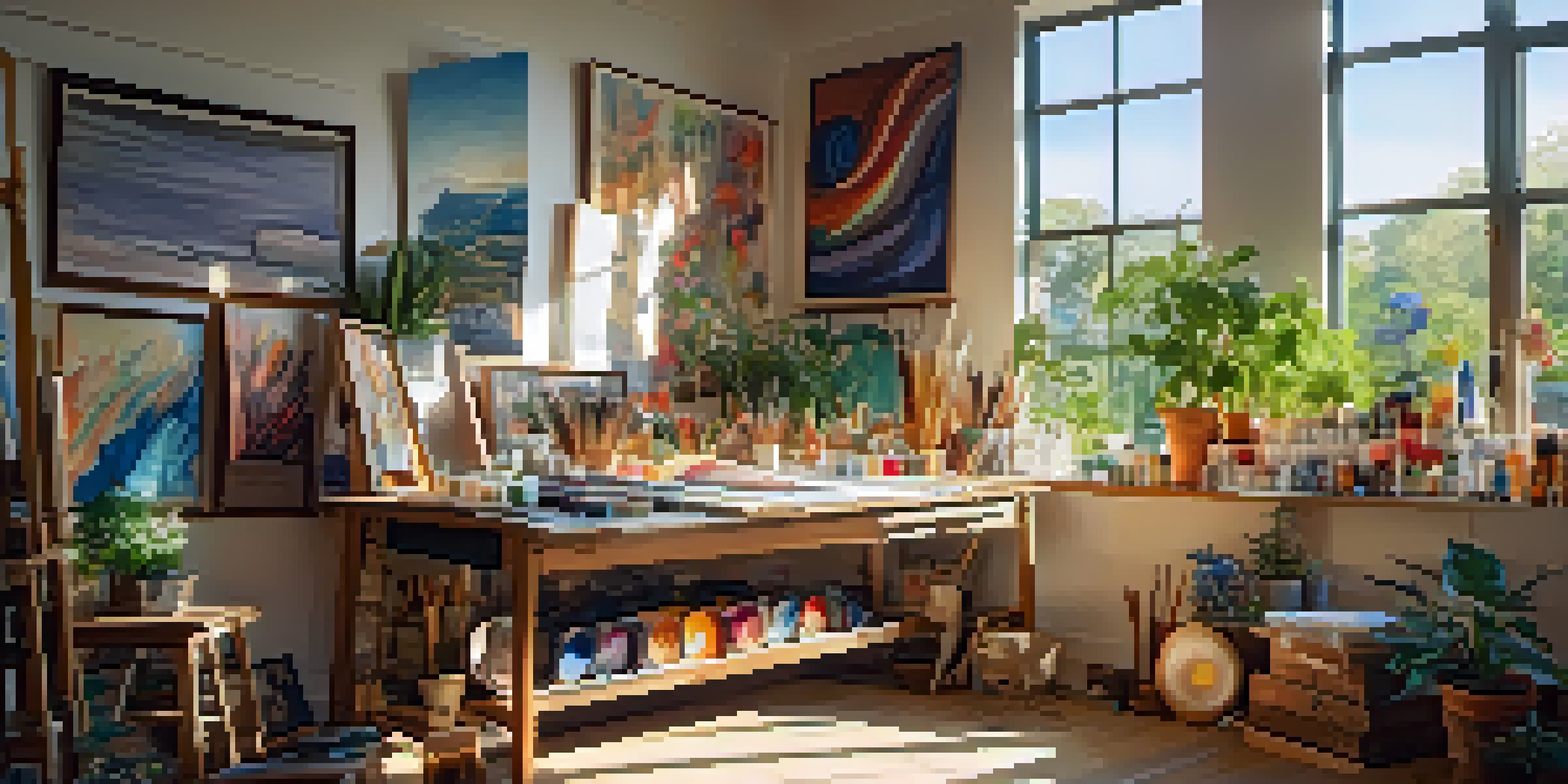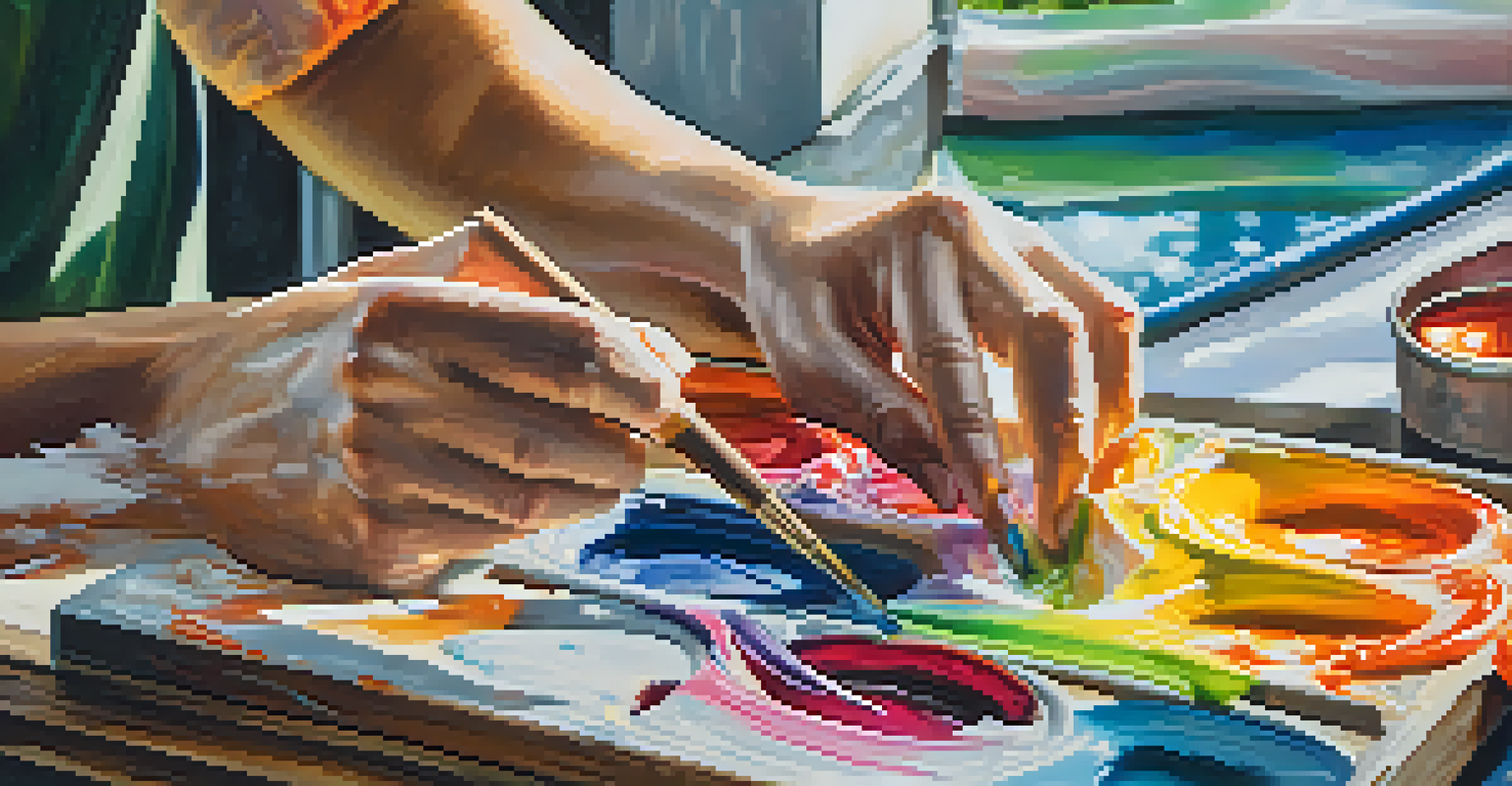Encouraging Creativity through Arts and Crafts Activities

The Importance of Creativity in Daily Life
Creativity is not just for artists; it plays a vital role in problem-solving and innovation in everyday life. By encouraging creative thinking, we can enhance our ability to approach challenges with a fresh perspective. This is particularly important in our fast-paced world, where adaptability is key. Arts and crafts activities provide a perfect outlet for expressing these creative ideas.
Creativity takes courage.
Moreover, creativity helps to foster emotional intelligence. When individuals create, they express their feelings and thoughts in tangible ways, which can be therapeutic. This process of self-expression can lead to greater self-awareness and emotional resilience, essential traits in both personal and professional settings.
Incorporating creativity into daily routines can also spark joy and satisfaction. Engaging in arts and crafts allows individuals to experience a sense of accomplishment and pride in their work. This feeling can motivate them to pursue other creative endeavors, creating a positive feedback loop of inspiration.
Arts and Crafts as a Tool for Self-Expression
Arts and crafts offer a unique platform for individuals to express their thoughts and emotions visually. Whether through painting, sculpting, or crafting, these activities allow for personal storytelling without the need for words. This form of expression can be particularly beneficial for those who find it challenging to articulate their feelings verbally.

Additionally, engaging in hands-on activities helps individuals to explore their identities and preferences. For example, choosing colors or materials can reflect one's personality and mood. This exploration can lead to important insights about oneself, fostering a deeper understanding of personal desires and motivations.
Creativity Enhances Problem-Solving
Engaging in creative activities nurtures critical thinking and flexibility, essential for tackling challenges in everyday life.
Moreover, self-expression through arts and crafts can strengthen social connections. Sharing creative projects with others can lead to meaningful conversations and collaboration. This not only enhances relationships but also builds a supportive community around shared interests.
Boosting Problem-Solving Skills through Creative Activities
Participating in arts and crafts nurtures critical thinking and problem-solving abilities. When faced with a creative challenge, such as designing a project, individuals must brainstorm ideas and evaluate options, which enhances their cognitive flexibility. This skill is vital in any aspect of life, from personal decisions to professional scenarios.
Every artist was first an amateur.
Crafting often involves experimenting with different materials or techniques, encouraging trial and error. This iterative process teaches individuals that failure can be a valuable part of learning, promoting resilience. As they navigate these challenges, they build confidence in their ability to tackle problems creatively.
Furthermore, arts and crafts can inspire innovative solutions in other areas of life. The skills acquired in a creative context often translate to improved thinking patterns in non-creative tasks, demonstrating that creativity is truly a versatile tool in our cognitive toolkit.
Enhancing Motor Skills through Craft Activities
Arts and crafts activities are not just about creative expression; they also play a crucial role in developing fine motor skills. Engaging in activities like cutting, gluing, or painting requires precision and control, which can be especially beneficial for children. These skills lay the foundation for more complex tasks, such as writing and typing.
Moreover, the act of creating can enhance hand-eye coordination. As individuals manipulate materials and tools, they learn to synchronize their movements with visual feedback. This coordination is essential not only in crafting but also in daily activities and sports.
Arts Foster Emotional Expression
Arts and crafts provide a unique platform for individuals to express their thoughts and feelings, promoting self-awareness and emotional resilience.
In adults, engaging in crafts can help maintain dexterity and motor skills, which may decline with age. Thus, making arts and crafts a regular part of one's routine can be a fun way to support ongoing physical development.
Fostering a Sense of Community through Arts and Crafts
Arts and crafts activities can serve as a fantastic way to bring people together. Community art projects, workshops, or crafting classes create spaces for individuals to connect over shared interests. These gatherings not only promote creativity but also foster social interaction and camaraderie.
When people collaborate on creative projects, they learn to appreciate diverse perspectives and ideas. This exchange of thoughts can lead to innovative solutions and strengthen community bonds. Such relationships are vital for creating a supportive and engaging environment.
Additionally, community involvement in arts and crafts can enhance local culture. When groups work together to create public art or organize exhibitions, they contribute to the cultural fabric of their community. This collective effort can instill a sense of pride and belonging among residents.
Incorporating Arts and Crafts into Education
Integrating arts and crafts into educational settings can significantly enhance learning experiences. Creative activities stimulate engagement and motivation among students, making lessons more enjoyable. When learners are excited about their projects, they are more likely to retain information and develop a love for learning.
Moreover, arts and crafts can cater to various learning styles. Visual learners may thrive in art-based tasks, while kinesthetic learners can benefit from hands-on activities. This inclusivity ensures that all students have the opportunity to succeed and express themselves in ways that resonate with them.
Community Building Through Creativity
Arts and crafts activities unite individuals, fostering social connections and enhancing local culture through collaborative projects.
Finally, incorporating creativity into education encourages critical thinking and innovation. By allowing students to explore and experiment, educators can inspire the next generation of thinkers and creators. This approach ultimately prepares students for a rapidly changing world, where creative problem-solving is a key asset.
Starting Your Arts and Crafts Journey Today
Embarking on your arts and crafts journey can be as simple as gathering a few materials and setting aside some time. You don’t need to be a professional artist to enjoy the creative process; the key is to have fun and explore your imagination. Start with basic supplies like paper, paints, or fabric and let your creativity flow.
Consider joining local workshops or online classes to learn new techniques and meet fellow enthusiasts. These communities can offer support and inspiration, making your creative endeavors even more enjoyable. Plus, you might discover new interests or skills you never knew you had!

Remember, the goal of arts and crafts is not perfection but rather the joy of creation. Embrace the process, allow yourself to make mistakes, and celebrate your unique creations. By doing so, you’re not only enhancing your creativity but also enriching your life with new experiences.